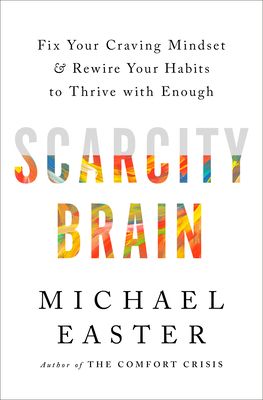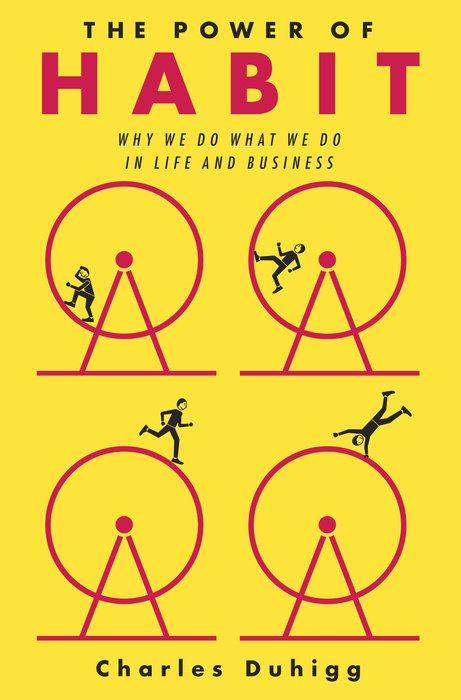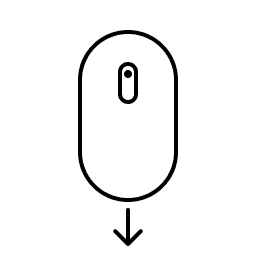Snippets about: Habits
Scroll left and right !
How Alcoholics Anonymous Leverages the Golden Rule
Alcoholics Anonymous is so effective because it helps alcoholics use the same cues and get the same reward, but shifts the routine. Researchers found:
- The cues that triggered an alcoholic's drinking (certain locations, social situations, emotional states) are identified through the AA 12-steps
- The rewards of drinking are also explicitly spelled out - escaping anxiety, relaxing, socializing, etc.
- AA then provides new routines to respond to those cues and rewards - going to meetings, calling a sponsor, meditating, praying, etc.
By diagnosing the habit loop, and then providing an alternative routine to satisfy the craving when cued, AA helps transform people's deepest habits. As long as the cues, rewards and cravings remain the same, a whole new set of routines can be developed to change the overall habit pattern.
Section: 1, Chapter: 3
Book: The Power of Habit
Author: Charles Duhigg
The 1-1-1 Journaling Method
Even five minutes of daily journaling can profoundly impact your mental health. The 1-1-1 method is a simple approach anyone can maintain:
Every evening, write down three things:
1. One win from the day
2. One point of tension, anxiety, or stress
3. One point of gratitude
This method works because:
- Noting a win allows you to appreciate progress
- Acknowledging tension gets it off your mind and onto paper
- Expressing gratitude helps you reflect on what's most important
To build accountability, create a group chat with others trying to establish a journaling habit and text "Done" when you complete your entry.
Section: 3, Chapter: 20
Book: The 5 Types of Wealth
Author: Sahil Bloom
Implementation Intentions
Implementation intentions involve creating a plan that specifies when and where you will perform a new habit. The formula for implementation intentions is:
“I will [BEHAVIOR] at [TIME] in [LOCATION].”
For example, "I will meditate for one minute at 7 a.m. in my kitchen."
Here's how to use implementation intentions effectively:
Be specific: Clearly define the behavior, time, and location to avoid ambiguity and ensure you know exactly when and how to act.
Choose the right time and location: Select a time and place that is conducive to performing the habit and where you're least likely to be interrupted or distracted.
Start small: Begin with a manageable commitment to increase your chances of success and build momentum.
Section: 2, Chapter: 5
Book: Atomic Habits
Author: James Clear
The Craving Brain
Once a habit is formed, the brain stops fully participating in decision making. It stops working so hard, or diverts focus to other tasks. So unless you deliberately fight a habit—unless you find new routines—the pattern will unfold automatically.
Habits never really disappear. They're encoded into the structures of our brain, which is a huge advantage for us, because it would be awful if we had to relearn how to drive after every vacation. The problem is that your brain can't tell the difference between bad and good habits, so if you have a bad one, it's always lurking there, waiting for the right cues and rewards.
The brain's dependence on automatic routines can be dangerous. Habits are often as much a curse as a benefit. The key is to learn how to observe the cues and rewards that drive our behaviors, so we can change the routine that occurs in between.
Section: 1, Chapter: 1
Book: The Power of Habit
Author: Charles Duhigg
The 3-Step Habit Loop
Habits are formed through a 3-step process called the "habit loop":
- Cue: An environmental trigger that tells your brain to go into automatic mode and prompts a habit
- Routine: The actual behavior or action you take, which can be physical, mental or emotional
- Reward: The benefit or pleasure you gain from doing the behavior, which helps your brain determine if the loop is worth remembering for the future
Over time, this loop becomes more and more automatic as the cue and reward become neurologically intertwined. Eventually a powerful sense of anticipation and craving emerges, and the habit becomes ingrained.
Section: 1, Chapter: 1
Book: The Power of Habit
Author: Charles Duhigg
Finding the Trigger Habit
Look for the "keystone habit" that can set off a chain reaction of widespread change
- For the Montgomery bus boycotts, it was Parks' close ties to the community that made her arrest a trigger point
- Find a keystone habit that taps into social ties and peer pressure to make change seem inevitable
- At Target, the keystone habit they tapped into was the habit of shopping for familiar, regularly used items at the store. Adding baby products to this routine made it a place new parents naturally shopped.
Section: 2, Chapter: 7
Book: The Power of Habit
Author: Charles Duhigg
You Don't Change In Breakthroughs; You Change In Microshifts
If you're stuck in life, it's probably because you're waiting for a breakthrough moment when all your fears dissolve and you're overcome with clarity. That moment will never come.
Breakthroughs are not spontaneous events; they are tipping points. What truly changes your life is a microshift - tiny increments of change in your day-to-day life. A microshift might be changing what you eat for one meal just one time, then doing it again and again until it becomes a pattern.
What you do every single day accounts for the quality of your life. To create lasting change, make tiny, nearly undetectable decisions every hour of every day until those choices become habits. You don't need to wait until you feel like changing to start changing.
Section: 1, Chapter: 4
Book: The Mountain Is You
Author: Brianna Wiest
Make Small Commitments And Keep Them
Covey emphasizes the importance of integrity in the little moments of life. He shares the story of teaching his son about the power of commitments:
Covey gave his seven-year-old son the responsibility of taking care of the family yard. He walked him through the expectations, got his son's buy-in, and agreed on consequences for not following through.
After initial reminders, the son started taking full ownership for the task. On his own initiative, he pulled weeds, worked hard in the summer heat, and kept the yard in great condition.
Later, Covey asked him, "How'd you do it?" His son replied, "Well, Dad, it was just like you said. I was the boss of myself."
Covey's simple agreement with his son proved more motivating than constant reminders or punishments. It helped his son develop internal discipline and responsibility.
We can apply this in our own lives by making and keeping small commitments with ourselves. Over time, these build our integrity and empower us to stay disciplined in major life priorities.
Section: 4, Chapter: 10
Book: The 7 Habits of Highly Effective People
Author: Stephen Covey
The Surprising Power of Keystone Habits
Some habits matter more than others - they have the power to transform our lives by creating a cascade of other positive habits and outcomes. These are called "keystone habits."
Keystone habits say that success doesn't depend on getting every single thing right, but instead relies on identifying a few key priorities and fashioning them into powerful levers. Keystone habits shape how people work, eat, play, live, spend, and communicate. They start a process that, over time, transforms everything.
When people start habitually exercising, even as infrequently as once a week, they start changing other, unrelated patterns in their lives, often unknowingly. They start eating better, becoming more productive, smoking less, showing more patience, spending less time watching TV and more time on homework. They use their credit cards less frequently, feel less stressed, and become better planners and communicators. It's not completely clear why, but for many people, exercise is a keystone habit that triggers widespread change.
Section: 2, Chapter: 4
Book: The Power of Habit
Author: Charles Duhigg
Design A Routine To Make The Essential Automatic
Identify a few key habits that align with your essential intent
- Block regular time for these in your schedule until they become automatic
- Tie a new habit to an existing one - pair your new journaling habit with your morning coffee ritual
- Start small - 5-10 minutes per day - then build on your consistency
- Make the essential the default so you don't have to think about it
Routines allow us to achieve more by not relying solely on motivation or willpower in the moment. Investing in creating the right routines pays massive dividends.
Section: 4, Chapter: 19
Book: Essentialism
Author: Greg McKeown
The Importance of Familiarity
To change people's habits, new behaviors must be made to feel familiar
- Procter & Gamble couldn't get Febreze to sell until they positioned it as part of the familiar cleaning routine, rather than a way to remove bad smells
- The U.S. government couldn't get people to eat organ meats during WWII until they described them as "variety meats" and used them in familiar dishes like meatloaf
- Target made new parents feel comfortable buying baby gear there by placing familiar items nearby and putting coupons next to regular merchandise
Section: 2, Chapter: 7
Book: The Power of Habit
Author: Charles Duhigg
Habits Are Like Zombie Programs In Your Brain
Habits are neurological cravings that automatically trigger behaviors without conscious thought - like zombies in your brain. They have four parts:
- the cue (the trigger for the zombie mode),
- the routine (the zombie response itself),
- the reward (the pleasure you get from it),
- and the belief (your underlying belief that powers the habit).
To change a habit, you must address each part, especially the cue and reward. Procrastination is a habit that arises from cues like seeing a challenging math problem. This triggers the routine of avoiding it for something more pleasant. The reward is temporary relief, and the underlying belief is that math is unpleasant. By identifying cues, changing routines and rewards, and shifting beliefs, you can reprogram your zombie habits.
Section: 1, Chapter: 6
Book: A Mind for Numbers
Author: Barbara Oakley
Immediate Rewards for Lasting Habits
Reward yourself immediately: When you complete a good habit, give yourself a small reward to make the experience more satisfying and reinforce the behavior. This could be anything from enjoying a piece of chocolate to watching a favorite TV show.
Track your habits: Use a habit tracker, such as a calendar or journal, to visually monitor your progress and provide a sense of accomplishment.
Focus on building a chain of successes: Aim to "never break the chain" of consecutive days performing your habit. This creates a sense of momentum and makes it more likely that you'll stick to your routine.
Celebrate small wins: Acknowledge and celebrate your successes, no matter how small, to reinforce your belief in your ability to change.
By incorporating immediate rewards into your habit routine, you can make the experience more enjoyable and increase the likelihood of sticking to your habits over time.
Section: 5, Chapter: 16
Book: Atomic Habits
Author: James Clear
Inspiration Is The Result Of Action, Not The Cause Of It
"If you lack the motivation to make an important change in your life, do something---anything, really---and then harness the reaction to that action as a way to begin motivating yourself."
Section: 1, Chapter: 7
Book: The Subtle Art of Not Giving a F*ck
Author: Mark Manson
Defining Health On Your Own Terms
One of the most common ways people sabotage themselves is by maintaining unhealthy habits that actively keep them from their goals. To overcome this, define health on your own terms - what does a healthy life look like for you personally?
It's difficult to rely solely on someone else's definition of healthfulness because we all have different needs, preferences, and schedules. Figure out what makes you feel best and what combination of healthy eating, exercise, and sleep works for your life.
Establish healthy habits gradually rather than forcing dramatic changes. Instead of committing to an hour at the gym at 6 AM, try 15 minutes or swap for a class you enjoy. Make it easy for yourself to succeed by preparing meals in advance or keeping water at your desk. Gradually recondition yourself to prefer habits that actually work for your lifestyle.
Section: 1, Chapter: 2
Book: The Mountain Is You
Author: Brianna Wiest
Champions and Habits
"Champions don't do extraordinary things. They do ordinary things, but they do them without thinking, too fast for the other team to react. They follow the habits they've learned."
Section: 1, Chapter: 3
Book: The Power of Habit
Author: Charles Duhigg
Two Types of Triggers
The "Trigger" is the actuator of a behavior - the spark plug that sets the engine in motion. Without a trigger to cue the user, no behavior happens.
There are two types of triggers:
- External triggers are cues in the user's environment that provide information for what to do next. App icons, email notifications, ads and promotions are all examples of external triggers. They tell the user what action to take next and provide a clear call-to-action.
- Internal triggers arise from within the user's own mind as associations with certain emotions, routines, or situations. When a user feels lonely, an internal trigger may cue them to open Facebook. When bored, an internal trigger prompts launching a game or browsing YouTube.
Here's the key: Habit-forming products often start by using external triggers to get users to take the intended actions. But through repeated usage, they aim to form strong associations with internal triggers, so users are cued automatically without needing an external prompt.
The goal is to get users responding automatically to internal triggers by opening your app or using your product as the solution to their emotional need or situation. Once this happens, the habit is firmly rooted in users' everyday routines and emotional realities.
Section: 1, Chapter: 2
Book: Hooked
Author: Nir Eyal
Just Do The Thing Once
To spend more time on what matters, stop focusing on becoming the kind of person who does that sort of thing. Instead, just do the thing - once, today or tomorrow at the latest.
Forgetting about the whole project of "becoming a meditator" and focusing solely on meditating for five minutes. Once. The same applies to writing, exercise, or any meaningful activity.
The irony is that just doing something once today is the only way you'll become the kind of person who does that sort of thing regularly. Otherwise, you're merely the kind of person who spends your life drawing up plans for how you're going to become a different kind of person later on.
Section: 1, Chapter: 2
Book: Meditations for Mortals
Author: Oliver Burkeman
Making Practice a Habit
Establishing a regular habit of practice is crucial for mastering any skill. Some tips for making practice a habit:
- Set a specific, regular time for practice in your schedule
- Start small, with sessions as short as 10-15 minutes, and build up gradually
- Remove distractions and temptations during practice time
- Practice in the same place each day to build associations
- Track your practice sessions to create a sense of progress and accountability
- Celebrate small wins and milestones along the way
Section: 1, Chapter: 7
Book: Make It Stick
Author: Peter Brown, Henry Roediger, Mark McDaniel
Books about Habits
Personal Development
Psychology
Habits
Human Behavior
Scarcity Brain Book Summary
Michael Easter
In a world of abundance, our ancient scarcity-wired brains keep us trapped in self-defeating loops of "more" - but by recognizing these patterns and deliberately choosing "enough," we can find deeper fulfillment.

Habits
Personal Development
Management
The Power of Habit Book Summary
Charles Duhigg
The Power of Habit illuminates the science behind habit formation and provides practical strategies for transforming habits in our personal lives, organizations, and society.



